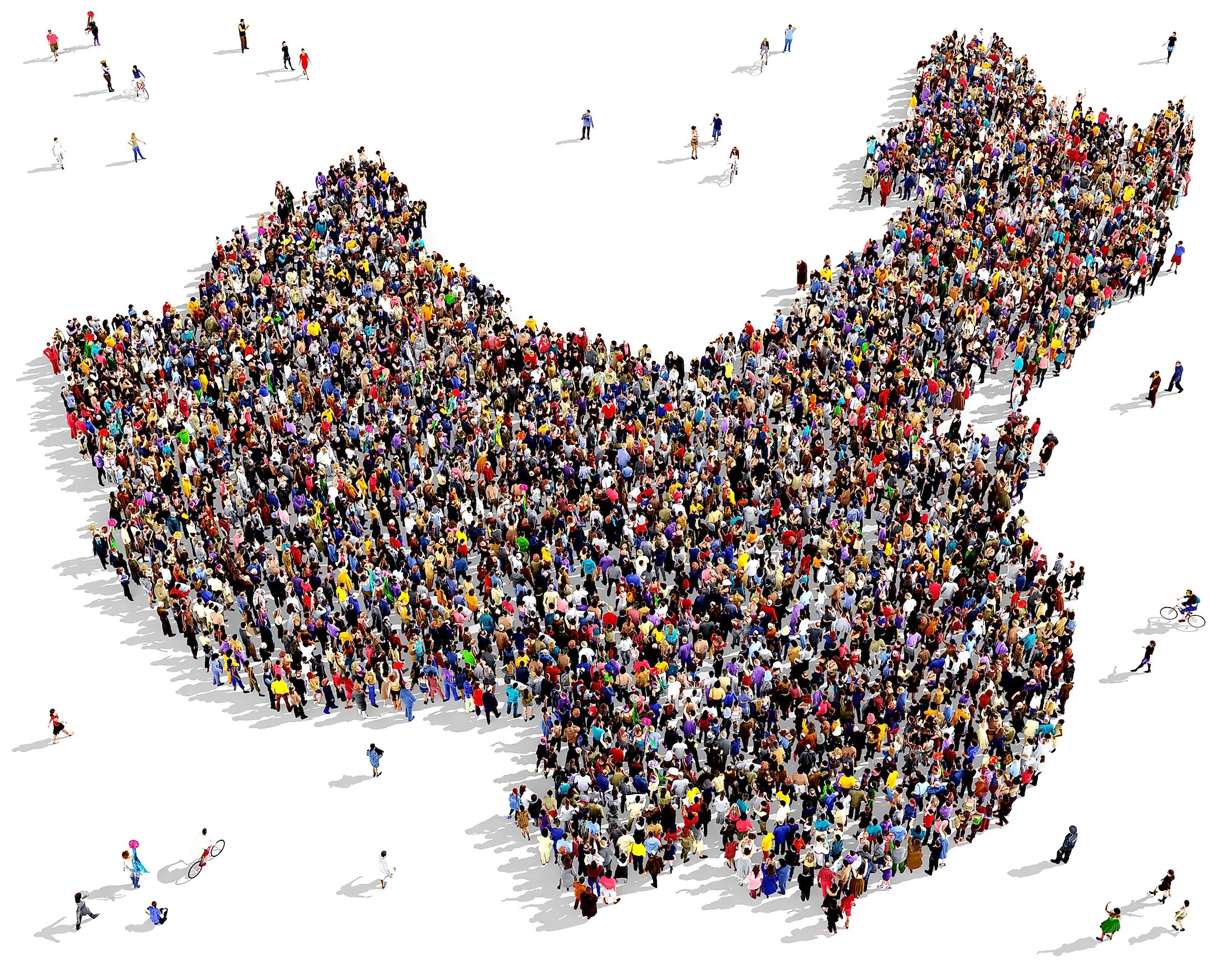
The Population Of China
The People’s Republic of China, located in East Asia, is the world’s fourth-largest country by total area (third largest country by land area) after Russia, Canada, and the US. However, it is the most populous country, with approximately 1.4 billion people, and one of the only two countries with more than one billion people (the other country is India). It accounts for about 18.3% of the world’s total population and 31% of Asia’s population. The country’s population is over four times the US population although it is only about 179,000 square kilometers larger than the North American state. It has a national population density of 145 people per square kilometer, making it the 83 most crowded country.
Demographic Outlook
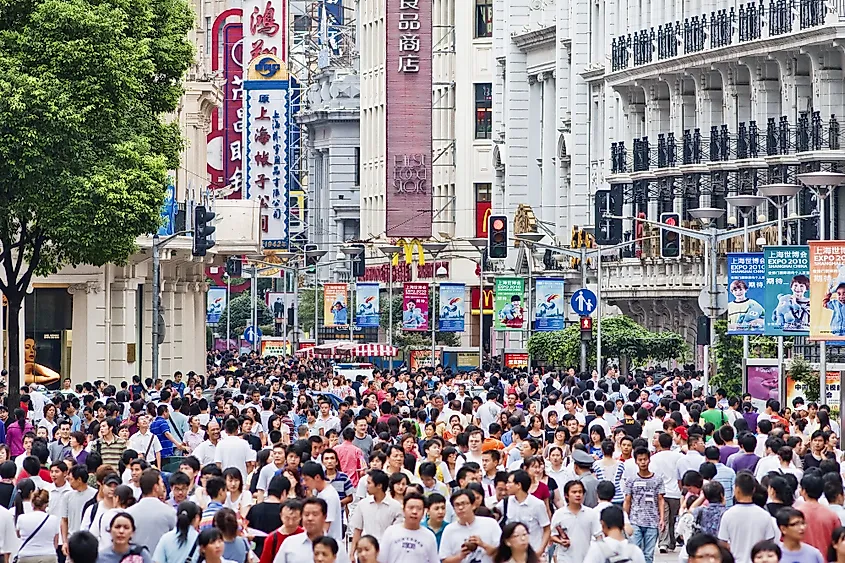
Since 1990, China has been conducting its national census once every ten years, conducting its 7th national population census in 2020. According to the census results released in May 2021, Mainland China is home to 1,411,778,724 people (excluding Macau and Hong Kong). The two special administrative regions, Macau and Hong Kong have populations of 683,218 and 7,474,200 people respectively. The number means China narrowly missed its target set in 2016 of boosting its population to at least 1.42 billion people. Guangdong is the country’s most populous province, with 126 million people, followed by Shandong (101.5 million) and Henan (99.3 million).
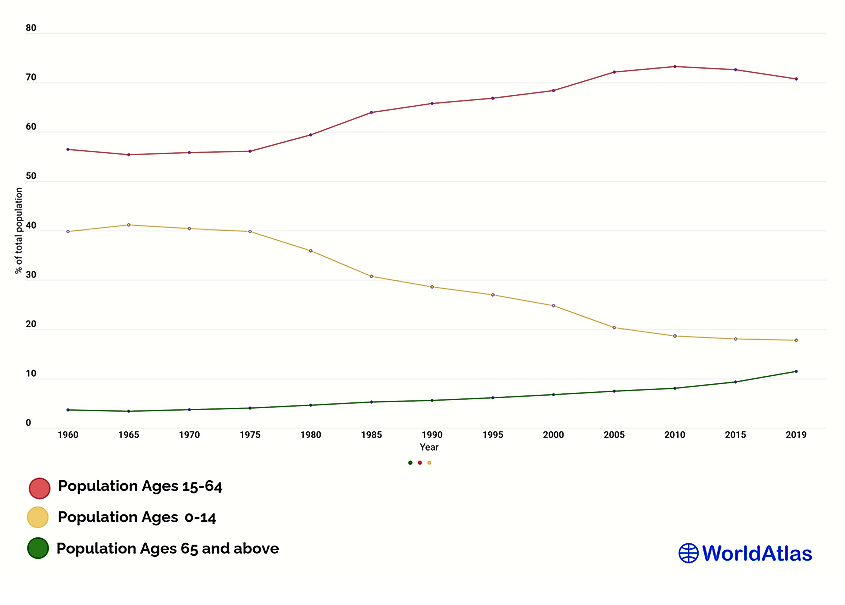
China has a young population, with 16.6% of its people aged 14 years or younger, while those aged between 15 and 59 years account for about 70% of the total population. Only about 13.3% are 69 years old or older. The median age of China’s population is 38.4 years. Chinese have a life expectancy of 76.5 years, with females living longer (at 78.6 years) than males (74.4 years). The country’s overall life expectancy has increased over the years, from 43.8 years in 1950 to the current 76.5 years.
However, China, like most Asian countries, has more men than women. The human sex ratio of the total population is 105 men per 100 females. The male population accounts for 51.29% of the total population, while the females make up 48.71%. China has a population growth rate of 0.56%, the world’s 159th highest. According to the government, the total fertility rate was 1.3 children per woman. The birth rate is 11.7 births per 1,000, while the death rate stands at 7.3 deaths per 1,000. However, the infant mortality rate is slightly higher, at 9.6 deaths per 1,000 live births.
Population Growth Trend
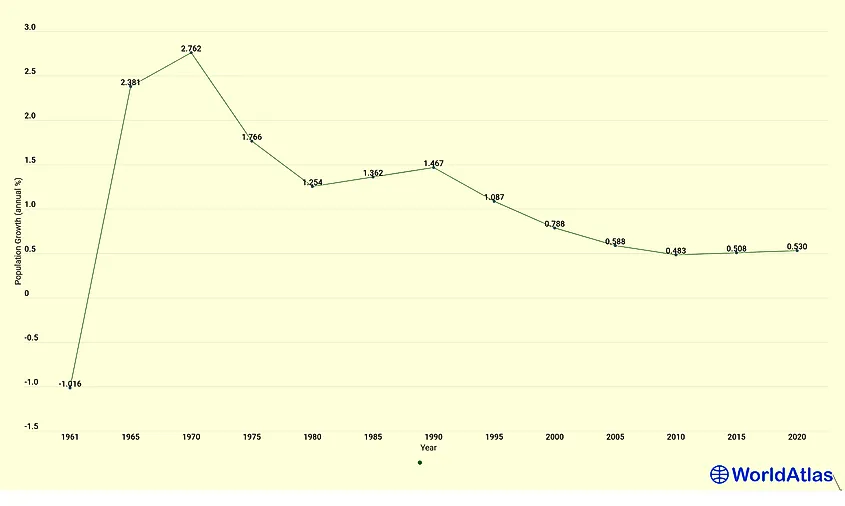
China has been the world’s most populous country for decades. As the global population surpassed six billion in 1999, China accounted for 20.8% of this total, meaning that one in every five people lived in the country. Chinese population increase by about 12 million people annually. China’s large population is both an asset and source of some challenges the country faces today. However, the country’s population growth has declined significantly in recent years, especially after the introduction of the one-child policy.
During the Han Dynasty (202 BC-220AD), China’s population was about 60 million people (or 25% of the world’s population). Although the population fluctuated for the next 1,000 years, it remained between 35 and 60 million. China’s population experienced growth and decline fluctuations over the next decades but still accounted for more than one-fifth of the world’s population. For instance, at the start of the Tang Dynasty (618 to 907), the population was 90 million, which dropped to 39 million by 907.
China’s population began to change dramatically towards the end of the Yuan Dynasty (1271-1368). The early years of the Ming Dynasty were marked by rapid population growth, increasing from 65 million in 1393 to 197 million in 1600. However, the most dramatic increase occurred between 1700 and 1850 during the Qing Dynasty, when China’s population more than tripled from 126 million to 430 million. By 1850, China’s population represented about 36% of the world’s population. However, the Taiping Rebellion (1850-1864) slowed the growth pattern and led to the death of some 30-50 million people.
Between 1851 and 1949, a period marked by social upheaval, rebellions, and sufferings, China’s population increased by about 100 million, reaching 500 million in 1933. The first modern census, conducted in 1953, revealed China had 583 million people. This number increased by more than 670 million in less than 50 years to 1.26 million in 2000, representing 21% of the global population. In 1981, China became the first country to host 0ne billion people.
Population Control And Declining Fertility Rates
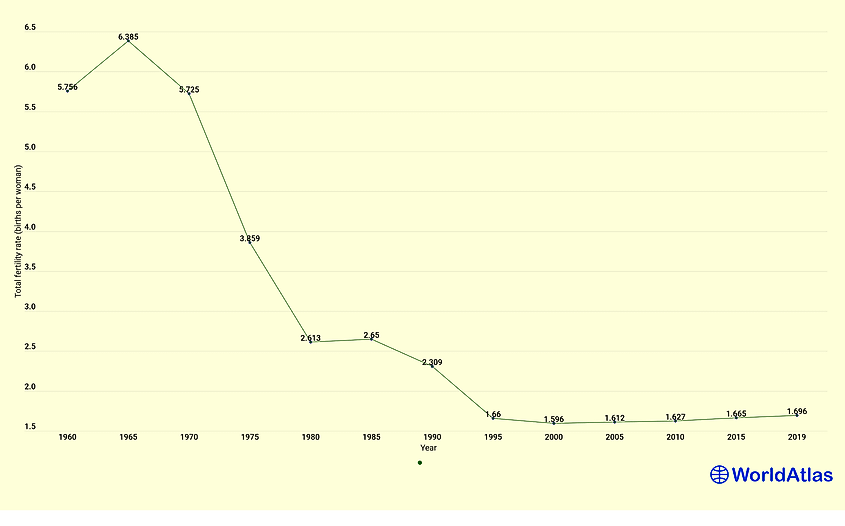
Between the first national census (1953) and the second census (1964), China’s population swelled by about 112 million people because of the high birth and low death rates. Despite losing about 20 million people to a famine that resulted from the Great Leap Forward, there were talks of population policy to help control the growing population. In the 1960s, the government set up birth control offices and encouraged late marriages. In the early 1970s, committees were established in urban and rural areas to supervise birth control activities.
What emerged from the population control efforts was the one-child policy. From the late 1970s, the government advocated for a one-child limit throughout the country, a maximum of two children only under special circumstances. The policy implementation was harsh, especially in the early 1980s, and included penalties for every extra child and a reward for those who observed it. Those who adhered to the policy were rewarded with longer maternity leaves, cash bonuses, and better child care. However, the policy encouraged infanticides and abortions both in rural and urban dwellings. The two-child policy replaced the one-child policy in 2016.
As a result of the one-child policy and other socioeconomic factors such as the high cost of living, late marriages, and education, China’s fertility rate has dropped significantly over the years. According to the World Bank, the country’s fertility rate was 5.76 births per woman in 1960, which increased to 6.385 in 1965. The implementation of birth control measures led to a significant drop in fertility rate, with the country recording 2.54 births in 1982. Although the fertility rate improved slightly in the 1980s, it has been maintained at below two children per woman in the last three decades.
Projected Population Growth
In 2017, it was estimated that China’s population would peak in 2030, at 1.44 billion. However, demographers now believe the population would peak much earlier. According to the latest census result, the country has 1.41 billion people, signifying only a 5.4% increase from the previous (2010) census. The number is also slightly below the government projection. The slow annual population growth of about 0.5% means China’s population would peak before 2025. However, the 2020 census result did not indicate when the population would peak
According to the National Bureau of Statistics, the number of children born in China continues to drop over the years. For instance, 12 million children were born in 2020, down from 14.7 million the previous year. At the current growth rate, China is projected to have an estimated 1.402 million people by 2050. According to the UN World Population Prospect, India will overtake China as the most populous country by 2027. China will become the third most populous country (behind India and Nigeria) by 2100, with about 1.09 billion people.











